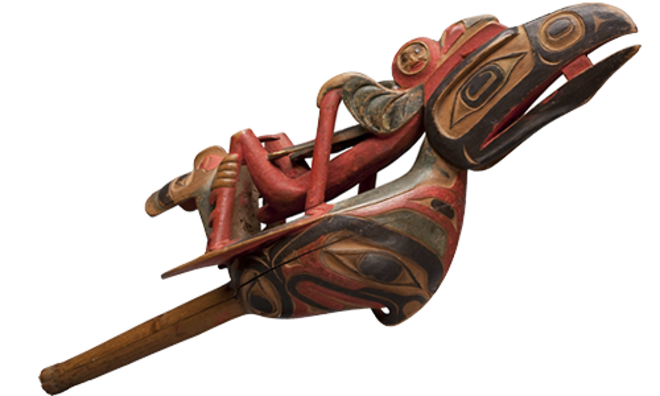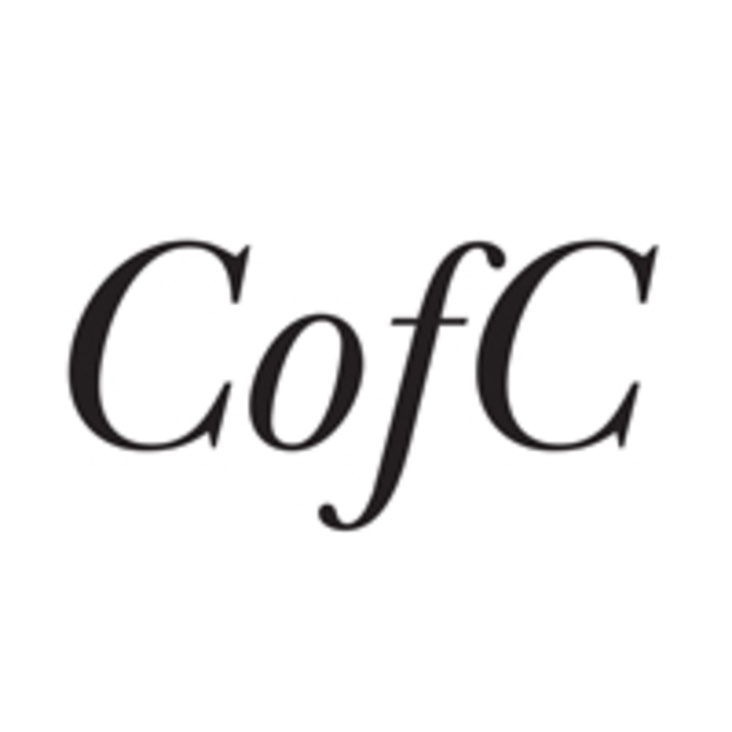Unknown maker, Tsimshian (?)
Wood, paint
Collected by Israel W. Powell between 1880 and 1885
Donated by Heber R. Bishop
American Museum of Natural History 16/297
First described in the late nineteenth century as a prestigious part of chiefly dancing regalia, raven rattles were likely used in earlier generations by people often called shamans. By the late 1700s, the rattle had diffused as an art form throughout the region via potlatch and trade, and was interpreted by individual carvers in accordance with local cultural motifs. No two rattles are identical, although all are elaborations on what scholars have identified as the “classic” or prototypical form: the raven’s belly depicts a supernatural being (sometimes called a hawk), while its back supports an ornate sculptural constellation of interconnected figures, typically a human, a frog, and other birds. The human often shares a tongue with the frog, and the main raven’s beak frequently holds a small object said to represent the mythical box of daylight. A tantalizing array of variants exists, with other kinds of animals (bears, wolves, dogs, otters), differing orientations of figures, and further enigmatic details. The Tlingit example is considered a classic raven rattle (sheishoox in Tlingit), featuring the heavy black formlines and narrow incising characteristic of the early contact period style on the northern coast. By contrast, the second rattle, currently attributed to the Tsimshian, is a striking variation on the prototypical form. Instead of the standard tableau, it features an insectlike being (identified by Powell as a grasshopper) in place of the human, with tibial spines on the legs, short protruding wings, globular eyes, and a rather avian beak with an extended but unlinked tongue. Few if any known raven rattles (which the Tsimshian call Sem’halaayt) display this kind of figuration, although Tsimshian mythology and crest systems include supernatural insects that can have traits of more than one creature. The enigmatic form of raven rattles suggests patterns of restricted and proprietary knowledge, especially when generic motifs are adapted for local purposes; interpretation may be publicly withheld, both within communities and in exchange with collectors.
Tags for Interactive Tag
Cloud: diffusion, misidentification, multiples










.jpg,732x732,c)













